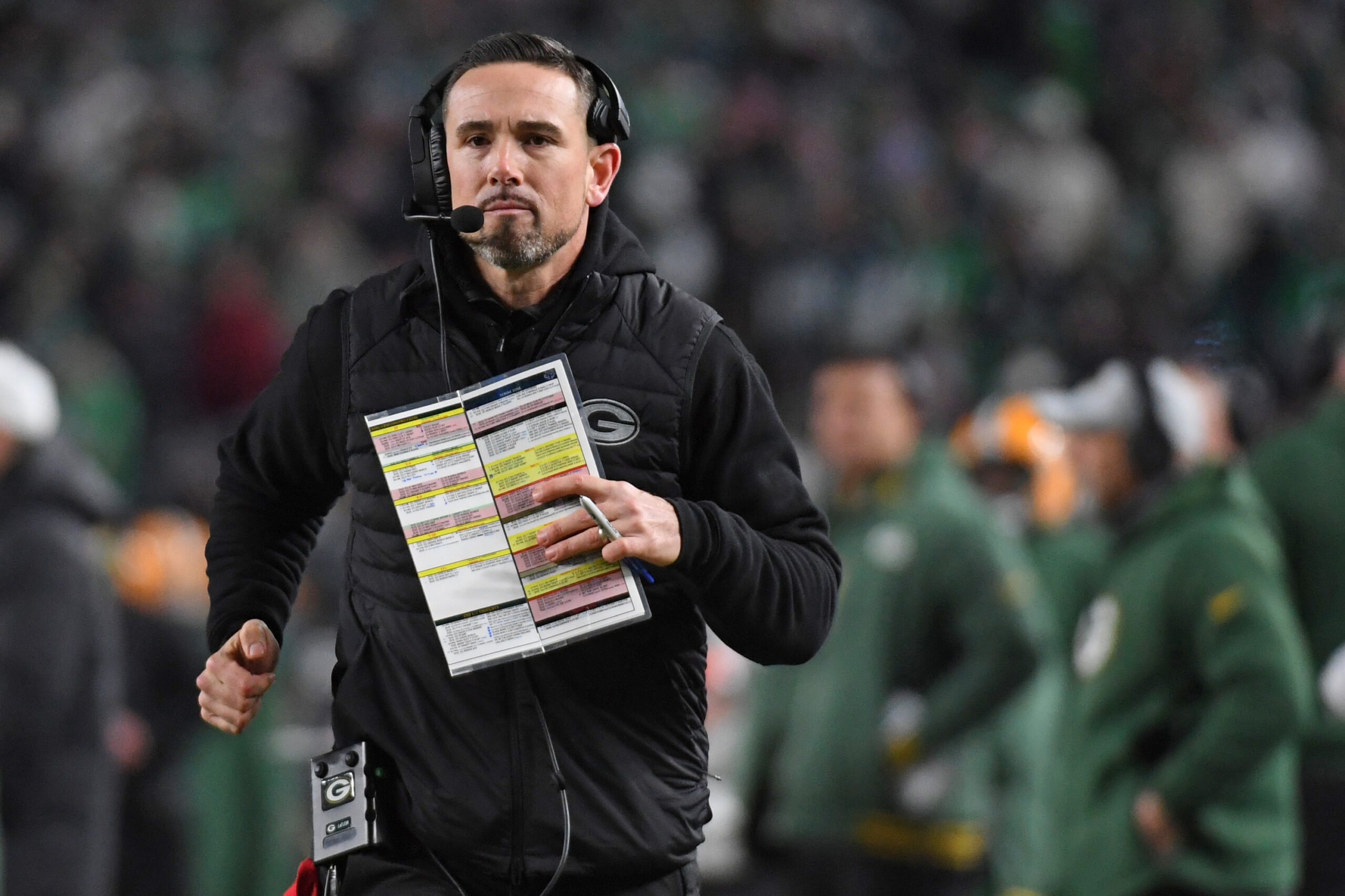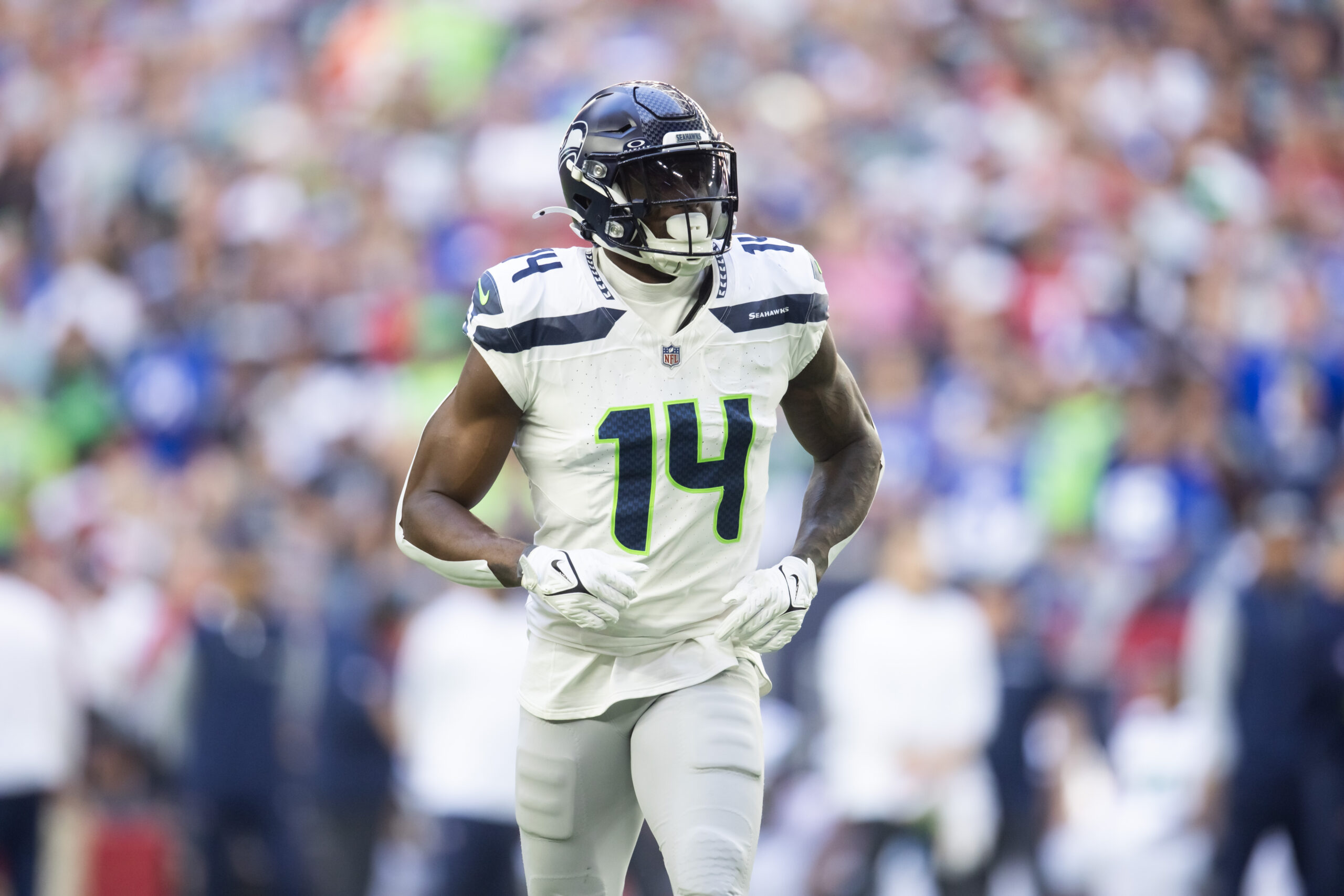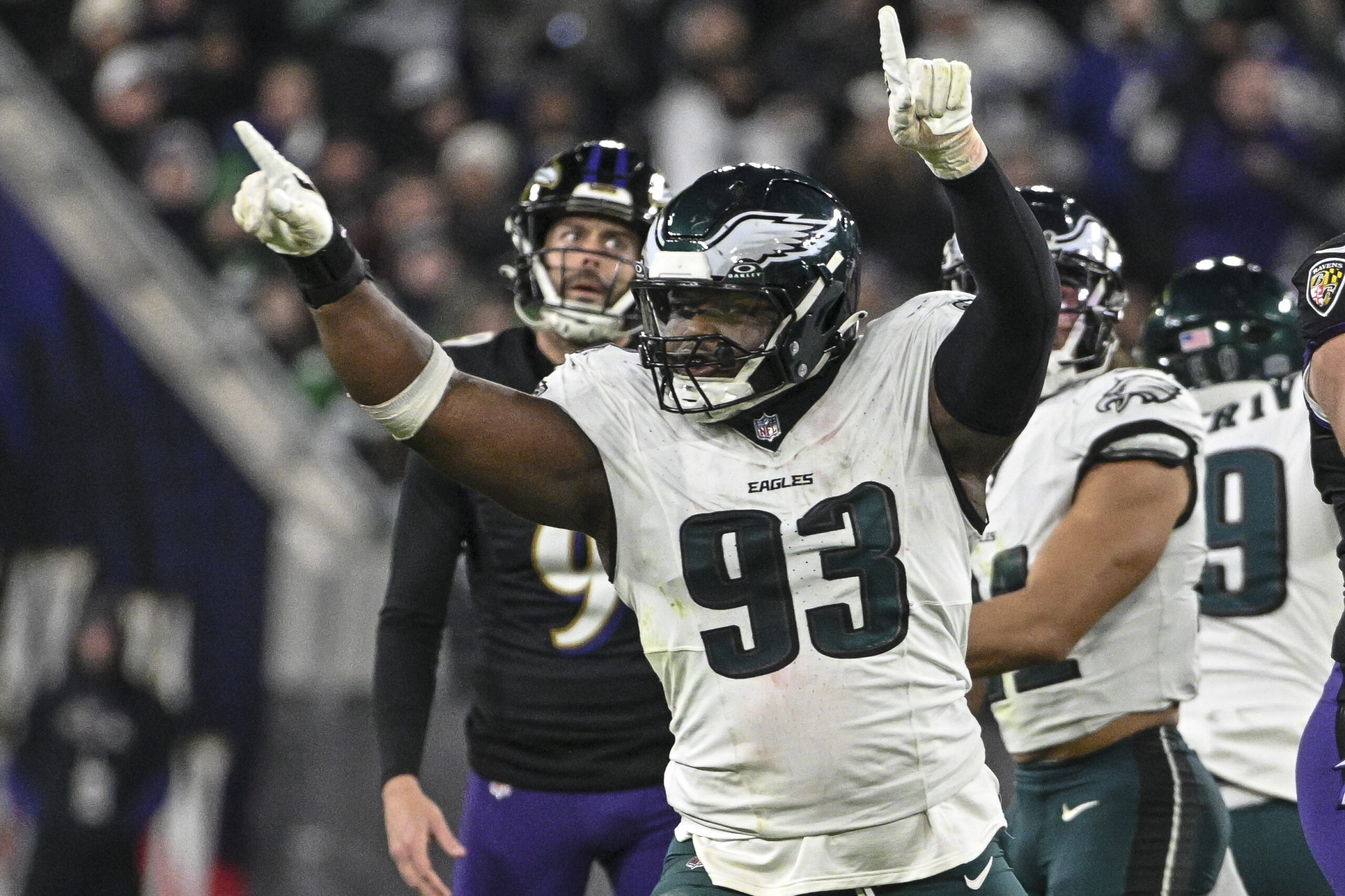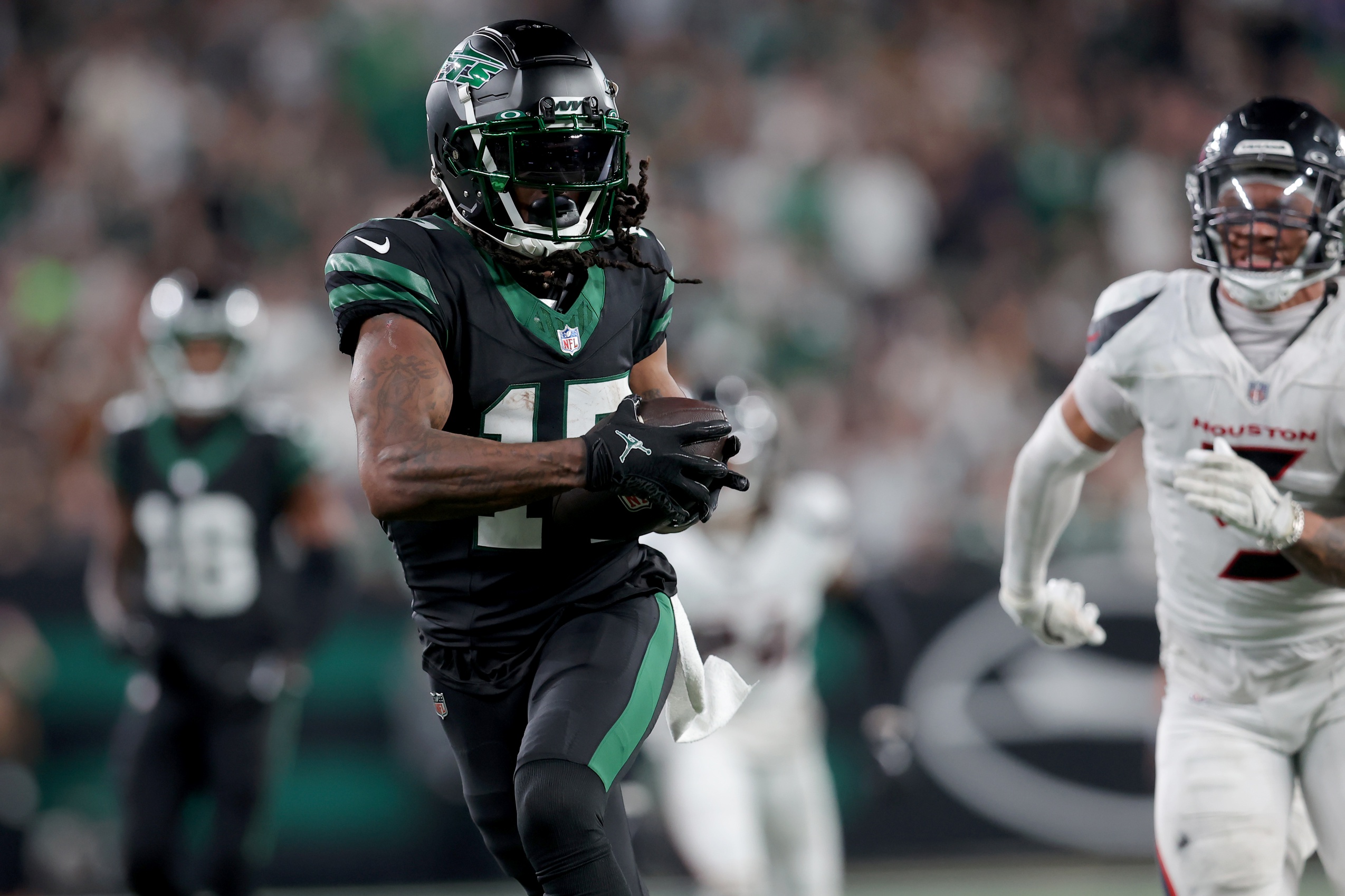NFL Analysis
1/9/25
9 min read
One Question For Each 2024 Wild Card Game
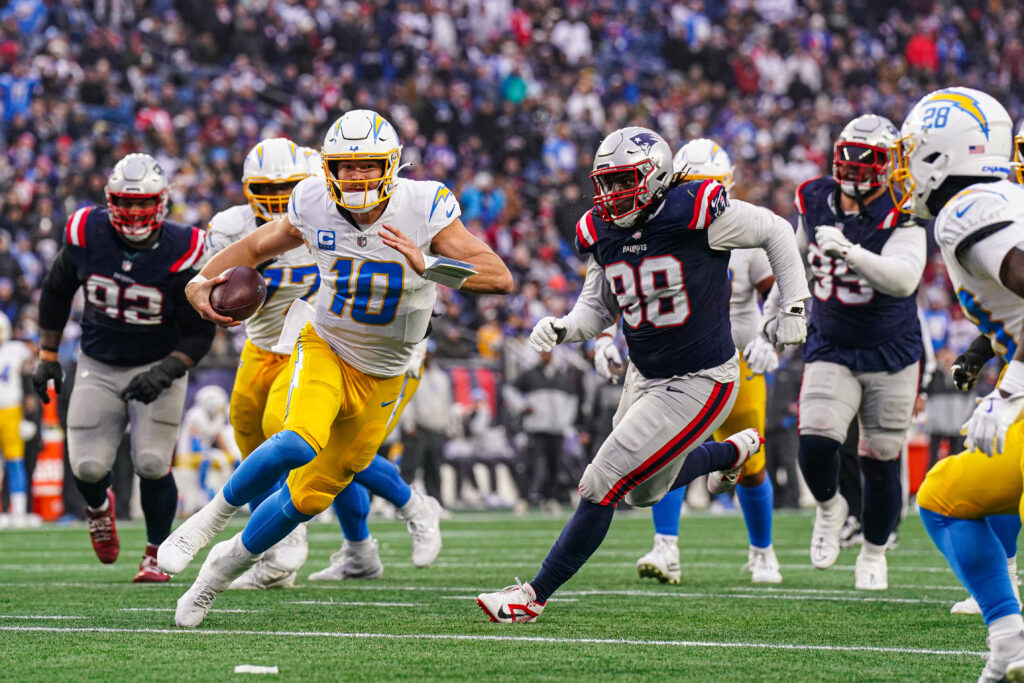
We’ve made it to Wild Card Weekend. We have some new matchups and some rematches. As a preview, we’ll take a look at one question for each game that could decide the outcome.
Chargers-Texans: Will Justin Herbert Use His Legs?
Justin Herbert has always had a big arm capable of making throws few other quarterbacks in the league can make. What’s been frustrating about Herbert in the past is how often he resorted to the check-down despite having the ability to make every throw.
In Herbert’s super-processor quarterback brain, those were the logical progressions when throws weren’t open— and that was often in the Chargers’ offense. This led to a low average depth of target and inconsistent efficiency.
But sometime around midseason this year, his first with Jim Harbaugh and Greg Roman, Herbert started to embrace his legs. Here’s Herbert’s three-game rolling average for scramble rate this season, according to TruMedia.

Herbert finished just around the league average but during the second half of the season, when Herbert ranked ninth in EPA per play among quarterbacks, he was eighth in scramble rate (6.9 percent) and also had 11 designed quarterback runs.
Running at a higher volume raised the floor of the offense because scrambles can be among the most efficient plays on offense. Instead of throwing a short pass to a running back, Hebert was taking off into space. In the game he ran more, he also looked more comfortable hanging in the pocket and waiting for something to come open, knowing that he could always take off if needed.
The Texans ranked 30th in EPA per play allowed to scrambles in the regular season. Given how good Houston’s cornerbacks have been on the outside this season (Derek Stingley was second and Kamari Lassiter was 24th in adjusted yards allowed per coverage snap this season), taking advantage of open holes in the middle of the field could be a cheat code to keep the Chargers’ offense on the field.
Steelers-Ravens: Is There Any Chance For Russell Wilson Deep Ball Success?
Much of the magic in Russell Wilson’s first few games as the starter for the Steelers came down to the re-emergence of the moonball. During Wilson’s first six games as a starter, he completed 50 percent of his deep passes traveling at least 20 air yards for 1.25 EPA per play. He had an 18.5 percent explosive pass rate overall.
Since Week 13, Wilson has completed 41.2 percent of his deep throws for 0.47 EPA per play. While those aren’t terrible rates — they rank 10th and ninth, respectively, in that time — the Steelers haven’t been able to lean on the massive success of those deep throws to compensate for other issues lacking in the passing game. Wilson has also thrown deep less often, going from 15 percent from Weeks 7 through 13 to 11.4 percent since Week 14.
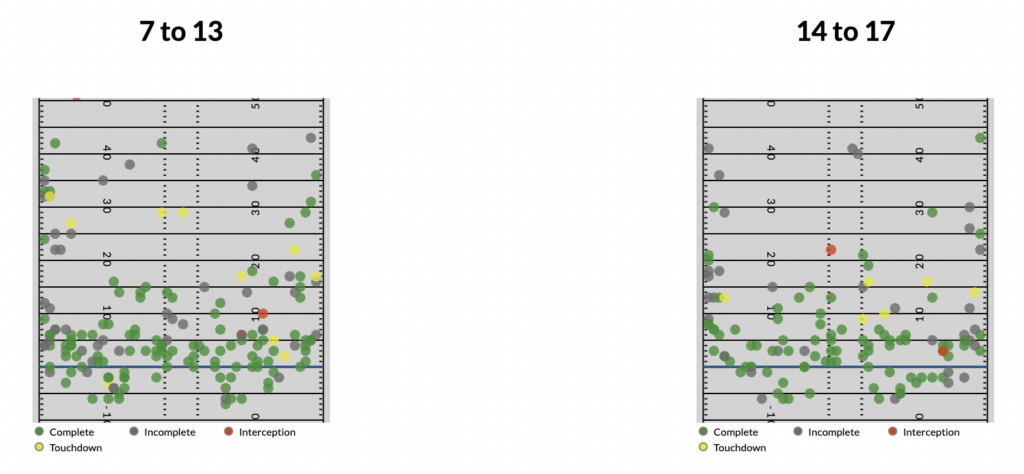
That dip coincides with George Pickens not being healthy and on the field. But he did return for the final two games of the season. He wasn’t 100 percent against the Chiefs on Christmas Day, when he caught three passes for 50 yards on seven targets. Then, in the regular season finale, he caught one pass for zero yards on six targets while running a route on 100 percent of the team’s dropbacks.
It would be one thing if the Steelers just needed to figure out how to fix themselves, but they’ll be going against a defense that has become one of the best at defending the deep ball. Since the Ravens shifted Kyle Hamilton back to a deep safety, they are third in EPA per play and first in success rate against deep passes.
Broncos-Bills: How Much Do The Bills Rely On The Passing Game?
Josh Allen just completed an MVP-caliber season. It’s clear he can take over a game whenever necessary. But the Bills have focused on building a team that can win in multiple ways and take the load off of Allen when needed. For years, Buffalo couldn’t rely on a run game to take any pressure off of the passing game. They have that now with a run game that was fourth in EPA per play and sixth in success rate.
Well, their playoff opponent happens to be the best team at defending the run this season — by a wide margin. Denver finished the season as the best defense overall by EPA per play and first against both the pass and the run but the run game success was more devastating and trying to establish the run just for the sake of it could turn problematic for the Bills.
The Broncos also play one of the highest rates of man coverage in the league and will likely lean into that against the Bills. No quarterback saw man coverage more often than Josh Allen during the 2024 season (34.1 percent), and he finished with the fourth-highest EPA per play when facing it (0.29).
However, that still is the way to test the Buffalo receivers and tight ends, most of whom have been less efficient when facing man coverage this season.

Asking Allen to consistently beat man coverage could be putting a lot on his plate — something the Bills have tried to avoid — but the other ways Buffalo has tried to balance the offense could could be even tougher to lean on against the Denver defense.
Packers-Eagles: Do The Eagles Play More Man Coverage?
Historically Vic Fangio runs a zone-heavy defense. The whole Fangio revolution across the NFL was based around Quarters coverages and two-high structure to defend against the deep pass and can give some space underneath.
But with the Eagles, especially during the second half of the season, Fangio has been more willing to lean into man coverage and trust his defenders when needed. The Eagles have played at least 30 percent man coverage in six games this season. They’re still better in zone but there have been times when the man coverage has clamped down on opposing offenses.
A team that might be most similarly structured to the Packers is the Rams. When Philadelphia played Los Angeles in Week 12, the Eagles played man on 32.2 percent of plays and had one of their most productive days in man (0.32 EPA per play).
Jordan Love has been one of the league’s best quarterbacks against zone coverage this season but has massive splits against man with and without Christian Watson, who tore his ACL in the season finale. With Watson on the field, Love averaged 0.08 EPA per play against man but averaged -0.32 without him.
The Packers have diverse skill sets in the receiving corps but none of the receivers have overwhelming traits against man coverage. Watson also provides a deep threat that can force attention vertically which the Packers lack when he’s not on the field. Without Watson, Love throws shorter and gets fewer yards after the catch on completions.
Commanders-Buccaneers: Will Either Defense Get A Stop?
Commanders-Buccaneers has the potential to be the highest-scoring game of the weekend. Tampa Bay finished the season 18th in EPA per play on defense but 23rd in EPA per dropback. Washington was 24th in EPA per play and 24th in EPA per dropback.
These two offenses were second and fourth in the rate of drives that ended in a score during the regular season.

Tampa Bay wants to blitz — that’s often a Todd Bowles philosophy but he’s leaned into it even further as injuries in the secondary have piled up — but Jayden Daniels ranked fifth in EPA per play against the blitz this season with 12 touchdowns and just one interception.
Daniels also had an 11.1 percent scramble rate against extra rushers. When quarterbacks scrambled against Tampa Bay blitzes during the regular season, the Buccaneers were 20th in EPA per play and allowed 10.2 yards per play.
The Buccaneers have the league’s best screen game, though the Commanders have been one of the league’s best at stopping them. Washington ranks ranked first in EPA per play, third in success rate, and seventh in yards per play against screens during the regular season. However, they weren’t as good against quick passes, which is where Baker Mayfield and the Buccaneers have thrived. Washington ranked 32nd in EPA per play on throws under 2.5 seconds while the Tampa Bay offense ranked sixth.
Vikings-Rams: Can The Rams Control Chaos Around the Line of Scrimmage?
Brian Flores wants to create chaos for an opposing quarterback. What’s made the Minnesota defense so dangerous is that on any given play anyone on the defense could start aligned somewhere and be somewhere completely different at the snap.
This is especially true around the line of scrimmage. Minnesota the highest blitz rate in the league and has the seventh-highest rate of sim pressures — which brings four pass rushers with one untraditional rusher. Combine Minnesota’s rates of blitzes and sim pressure and it accounts for 86.1 percent of the Vikings’ plays on defense, easily first in the league.
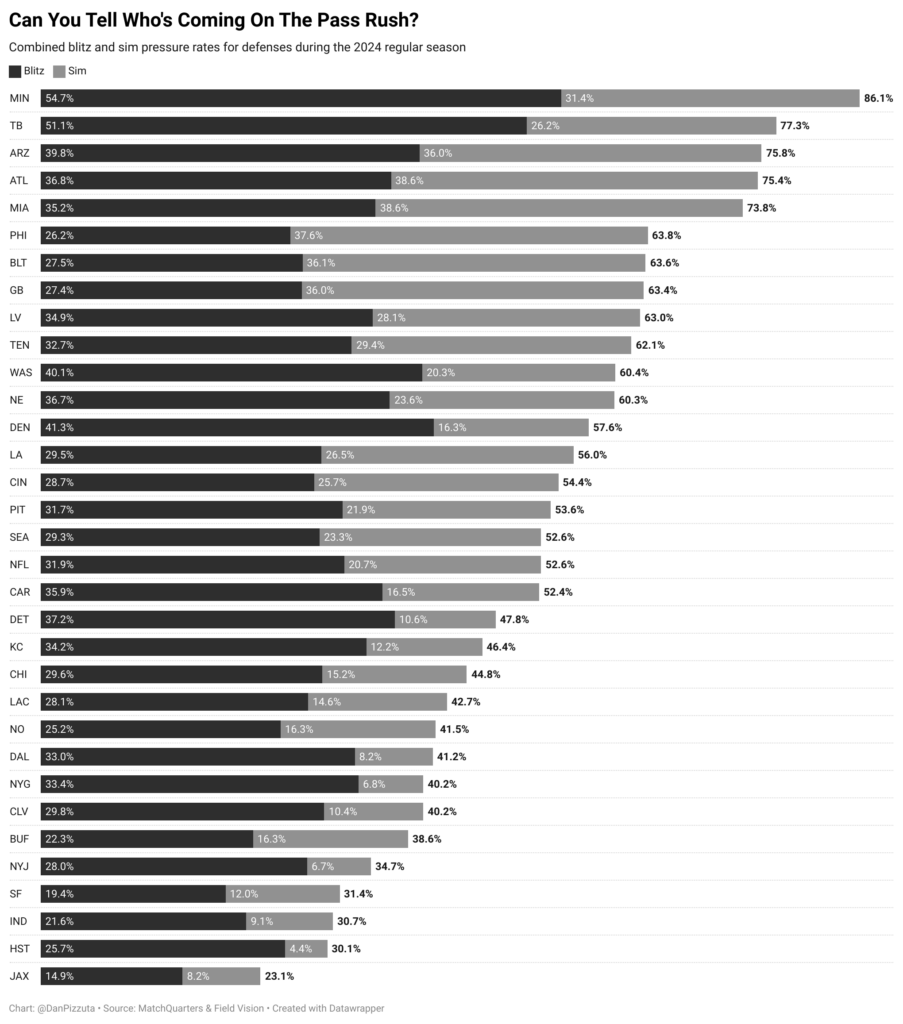
With so much confusion around the line of scrimmage, it can be difficult for the opposing quarterback to identify who is coming as a passer rusher and what the defense plans to do at the snap.
One way to combat this is by going empty. It’s a risk because it leaves just a five-man protection against what could be six or seven pass rushers but defenses often don’t. The league-wide blitz rate against empty is just 17 percent this season. It also spreads defenders out and forces the defense to come closer to declaring its intentions in alignment.
During the second half of the season, the Rams have come back around on their use of empty looks after mostly abandoning them from the back half of the 2023 season through the first half of 2024. It was the biggest weapon for the 2021 Super Bowl-winning offense when he led the league in empty usage. He’s used empty on at least 15 percent of his plays in three of his past four games, including the offensive explosion against the Bills in Week 14. (23.3 percent).

Since Week 14, Stafford has averaged 0.63 EPA per play from empty. Minnesota’s defense is just 14th in EPA per play when defending against empty and has only blitzed on 14.9 percent of those snaps.


